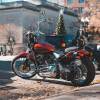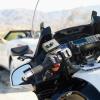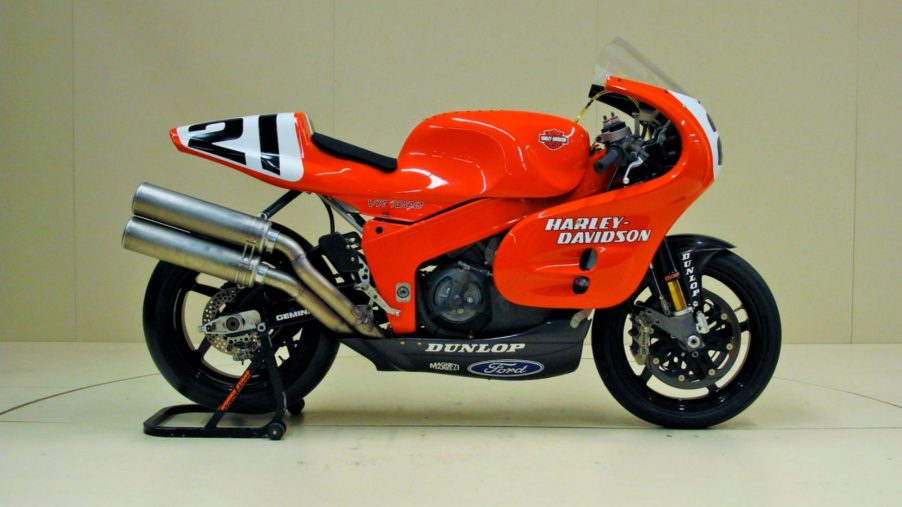
This Rare Harley-Davidson Sportbike Started a V-Twin Revolution
The last few months and years have been as transformative for Harley-Davidson as they’ve been tumultuous. Sure, it still makes cruisers and baggers, but the Motor Company’s product line now includes an adventure bike, e-bikes, and the electric LiveWire. And it recently revamped the iconic Sportster into something truly sporty and cutting-edge. But that was only possible because of the brand’s oft-forgotten sportbike: the Harley-Davidson VR1000.
Without the liquid-cooled Harley-Davidson VR1000 sportbike, there wouldn’t be a Pan America or Sportster S
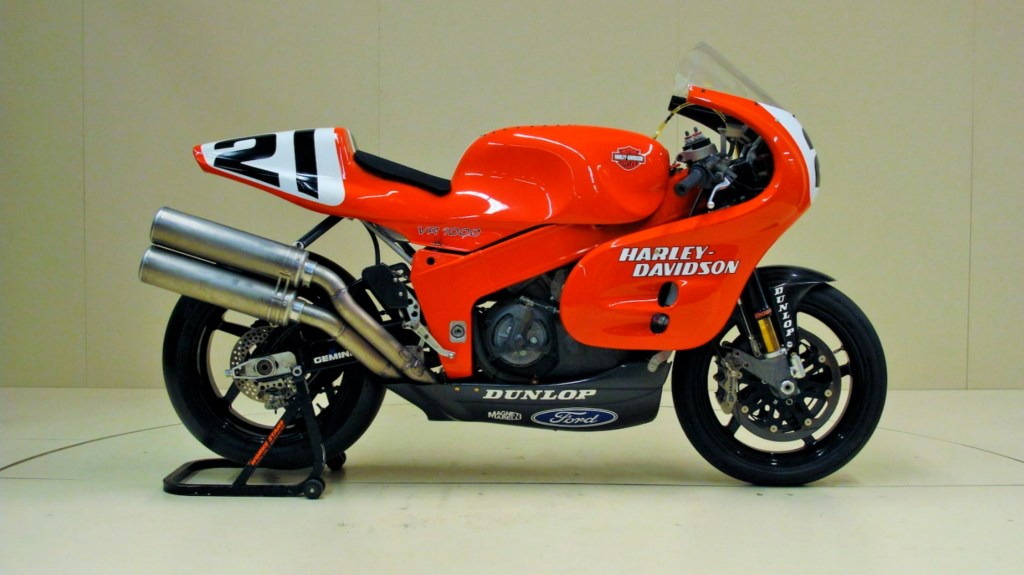
One of the major changes the Harley-Davidson Pan America and Sportster S bring to the company’s usual formula is a liquid-cooled V-twin. Dubbed ‘Revolution Max’ in the ADV and ‘Revolution Max 1250T’ in the Sportster S, this high-revving engine is very different from the usual air-cooled powerplants. But it’s not without precedent.
Before the Revolution Max, Harley-Davidson had the ‘Revolution’ V-twin, a high-revving, liquid-cooled engine partially developed with Porsche’s help. This 9000-RPM powerplant debuted in the early 2000s in the V-Rod power cruiser, a trellis-framed anomaly in the Harley lineup. Yet this unorthodox motorcycle, and thus, the Pan America and Sportster S, owes its existence to an even earlier abnormality.
This oddity, the Harley-Davidson VR1000 is, as of this writing, the brand’s only sportbike. Developed in the late 1980s and early 1990s, it was designed for AMA Superbike, the predecessor to today’s MotoAmerica Superbike series. And its development team was an all-star roster from the racing world, Silodrome reports. Cosworth, Roush, and Erik Buell—yes, that Erik Buell—came together to build this road racer from the ground up.
Keep in mind, Harley-Davidson had only just become an independent company again. And it would be competing against the likes of Ducati, which was steamrolling the competition with its Desmoquattro V-twins. That, along with upcoming EPA regulation changes, meant the sportbike couldn’t just use a ‘traditional’ air-cooled, carbureted engine.
As a result, the Harley-Davidson VR1000 wasn’t ready until the 1994 racing season, Silodrome says. But the finished sportbike didn’t just lay the groundwork for the current Revolution Max bikes. It also showed the world a whole new side of Harley’s performance potential.
Even without an AMA Superbike win, the Harley-Davidson VR1000 is an impressive ‘90s sportbike
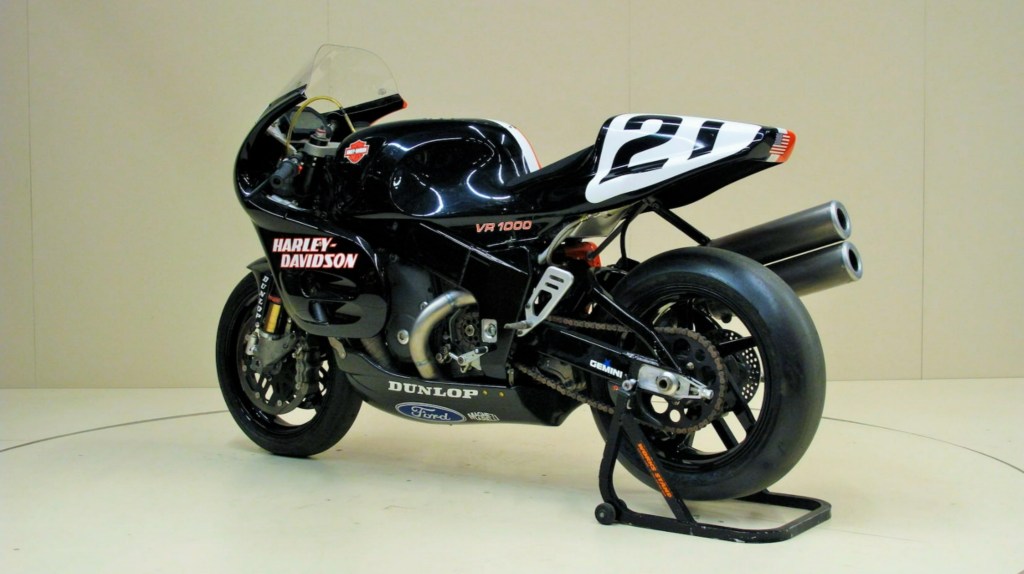
| Harley-Davidson VR1000 | |
| Engine | 996cc liquid-cooled fuel-injected V-twin |
| Horsepower | 135 hp |
| Torque | 100 lb-ft |
| Transmission | Five-speed manual |
| Front suspension | Fully-adjustable Ohlins inverted fork |
| Rear suspension | Fully-adjustable Ohlins mono-shock |
| Weight | 389 lbs (dry) 451 lbs (fully-fueled) (Mecum) |
The Harley-Davidson VR1000 isn’t an unusual Harley purely by dint of being a liquid-cooled sportbike.
Its V-twin has overhead cams instead of pushrods, for example, and four of them to boot. Also, rather than a belt, the V-twin sends power to the rear wheel via a chain, not a belt. In addition, because it’s a race machine, it has a Ducati-style dry clutch.
But we’re not done yet. How many Harleys come standard from the factory with a steering damper? Also, aside from some of Buell’s bikes, how many Harley-powered motorcycles use their frames as fuel tanks? And to cap it all off, the VR1000 is wrapped in lightweight carbon-fiber bodywork.
Unfortunately, the Harley-Davidson VR1000 never had a truly successful Superbike season. Riders had a few podium finishes, but the long development period meant it was effectively outdated upon release. So, in 2001, Harley pulled the plug on the VR program.
However, before that happened, Harley-Davidson had to build at least 50 VR1000s for homologation purposes. That made this bike the fastest street-legal American motorcycle. Rumors claim that the VR1000 was only street-legal in Poland, but that’s not true: it’s street-legal in the US. But the only differences between a road-legal VR1000 and a race version are some lights, turn signals, and mirrors.
As such, the Harley-Davidson VR1000 isn’t exactly a good street bike. To save weight, the original alternator was a bit undersized, so it can’t fully charge the battery on its own. However, it’s an excellent track machine. The Penske-tweaked Ohlins suspension and stiff chassis make it “solid, stable, confidence-inspiring,” and above all, “’totally user-friendly,’” Cycle World says. Its V-twin pulls hard, especially at high RPMs, and its Wilwood disc brakes make trail-braking a breeze.
It wasn’t a winning Superbike, but the VR1000 wasn’t a half-hearted attempt.
This rare road racer racks up big returns at auctions
Although the Harley-Davidson VR1000 had a short racing career, its time in dealerships was even shorter. Harley only sold it for one year, and while records differ, it didn’t sell more than 55 examples. A high sticker price didn’t help matters: in 1994, a VR1000 cost $49,490—that’s the modern equivalent of $92,800. You can almost get four brand-new Ninja H2 SX SEs for that much.
And this sportbike hasn’t gotten significantly cheaper. While some examples occasionally sell for under $70K, six-figure VR1000s are more common. Mecum sold one in May 2021 for $126,500.
Still, even if it wasn’t a real winner, the VR1000 paved the way for Harley’s modern direction. So, perhaps it’s fair that it’s getting some due appreciation.
Follow more updates from MotorBiscuit on our Facebook page.
